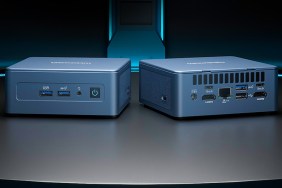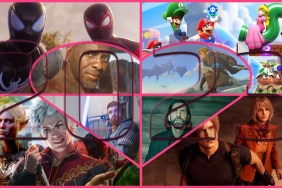Rebellion. Insurrection. Revolution.
‘Hear my words, for in this time of war and conflict, only the Empire can hold the races together. It is our destiny to lead, and so we must take back upon our shoulders the burden of leadership. Without the proper guidance and knowledge, those who seek to rule themselves do more harm than good. This war causes irreparable damage to this precious land of ours, and to us – the Tha’ Roon, who were born to conquer and rule. That fact alone speaks out to us, as clear as the Thousand Years of the Empire, as central as our faith in logic. Civilization has but a single name: and that name, is Tha’ Roon.’
The Tha’ Roon are one of four races you can
play in War Wind, a new Warcraft II or Command
& Conquer look alike from SSI. Having already defeated both of the aforementioned
games (including expansion packs), I was looking forward to a new and creative
game in my favorite format (real time strategy). While the creativity was there,
the gameplay just didn’t live up to expectations, leaving me moderately disappointed.
[image1] The world of War Wind
is the planet Yavaun, where for alien races fight for control. The Tha’ Roon
are the ancient, purple, snake-like masters of a thousand year dynasty. Grown
complacent, capricious and cruel, the subjugated races see an opportunity for
freedom.
The Obblinox (large, reddish, hairy tripeds) are the traditional warrior-servants of the Tha’ Roon. Big and tough, but none too bright, they have a highly developed sense of honor and have begun to question the motives of their overlords. While other races should be put in their place, perhaps it could be done with more honor…
Builders of the empire, the Eaggra are sentient plant creatures who have slaved away the centuries building the structures and vehicles of the Tha’ Roon. Hating the oppresive sepentine masters and their Obblinox flunkies, the Eaggra have decided that the only path to freedom is to kill anyone standing in their way.
The Shama’ Li are the mystery race of Yavaun. Looking a bit like ET, but with three eyes, they cling to the ancient ruins and spiritual places of the planet. Like new-age mystics, they preach brotherhood between the races and the coming of NagaRom. They are quite willing to bash everyone on the head until they see the light.
You control the race of your choice with the now familiar ‘top-down’ view of other real-time strategy games. You can highlight a single unit, or a group of units and then order them around. You goal is (usually) the destruction of the enemy.
[image2] The graphics are just a little
too small for this type of game. Many of the units become difficult to distinguish,
especially when they all get grouped together. Also, the graphic designers seem
to have gotten a little lazy: several different types of units looked exactly
the same, except the units of one kind would be marked with a white ‘O’ floating
in the corner of the map square. The different buildings are also difficult
to distinguish. After hours of play, I still couldn’t tell the difference between
the Tha’ Roon Acadamy and Laboritory. They both still looked like purple buildings
with talons. The backgrounds looked almost exactly like those of Warcraft
II.
There are 12 ‘heroes’ in the game, and these were well done. They had unique characteristics and graphics (unlike Warcraft II where they were just a different color). The attacks were all original and well animated.
Upgrades, the essence of long-term strategy, were very difficult in this game. All of your warriors are originally recruited a basic workers. They can later be upgraded to fighters at different buildings. To upgrade further to more powerful units, you must conduct research with particular units inside particular buildings (this was difficult to keep track of). The research costs you ‘clan status’ as well as resources. You can buy clan status back with more resources or by killing enemy units. Research will give you new kinds of units as well as five different kinds of ‘bio-upgrades’: cybernetic enhancements for your units.
One of the most irritating parts of War Wind is that you have to upgrade each unit individually! You also have to do it while the unit is present inside the correct type of building. There is only room for two in a building at a time, and the one in back can’t get out until the one in front moves. Upgrading units took forever and there was no way to tell which of your units had which upgrades without clicking on them.
[image3] Another innovation in this
game that failed (in my opinion) was the addition of ‘stealth’. Each unit has
a different stealth level which can be further enhanced by bio-upgrades. Depending
on a unit’s stealth level, they will appear as an enemy unit or even be invisible.
This took almost all the tactical strategy out of the game. Who cares how well
you organize you units and take up defensive or offensive positions, when the
enemy can just walk around freely looking like one of your soldiers?
The manual, which is about the size of a Harlequin Romance novel, failed to explain how to really use all these new complexities. In fact I encountered several items (scrolls, explosive rounds) on the first couple of maps that weren’t even covered in the book!
Add to all this 6 different buildings, two kinds of walls, trucks, barges, cruisers, ferries, two kinds of flying drones, bridges, roads, land mines, and about 2 dozen spells.
In short, War Wind is a game that tries to do too much. It has added levels of complexity that haven’t been seen before in a real time strategy game. But SSI sacrificed playability as a consequence. The creative storyline showed a lot of thought, the heroes were well done, and the native wildlife added spice (and just a bit of chaos) to the game. However when it came to gameplay, War Wind got confusing and even boring at times.
-
Great plot
-
Cool heroes
-
Average graphics
-
Too complicated for its own good











